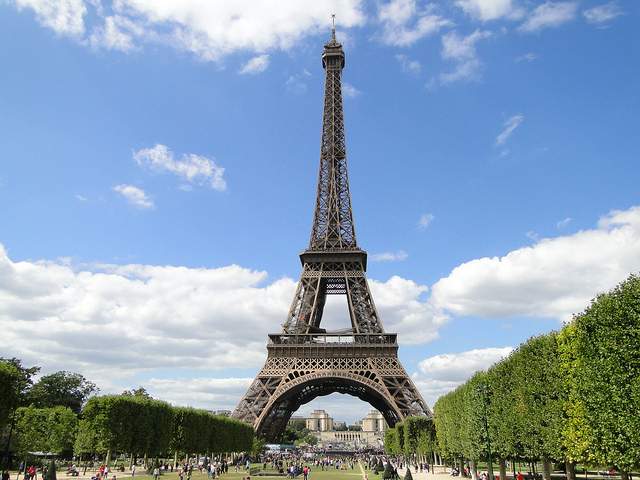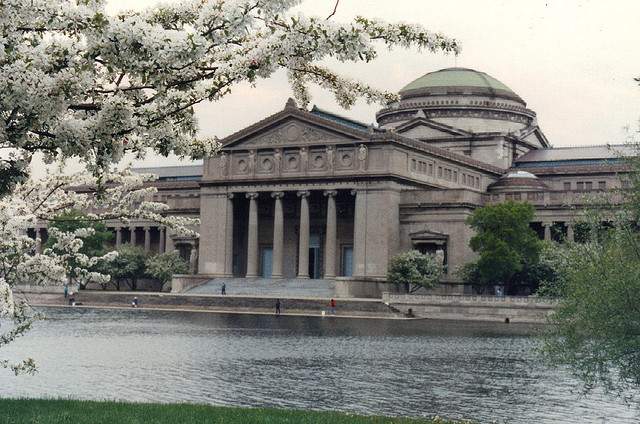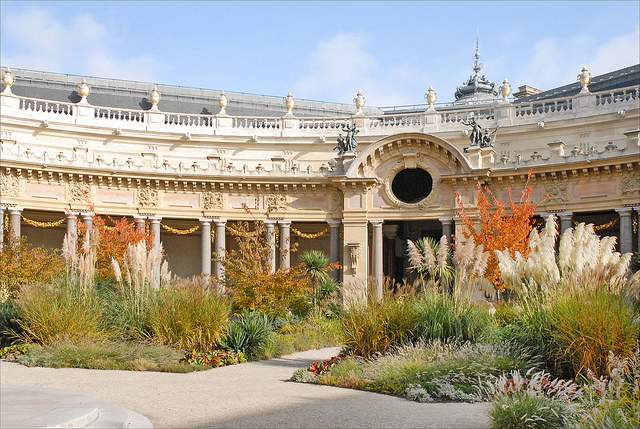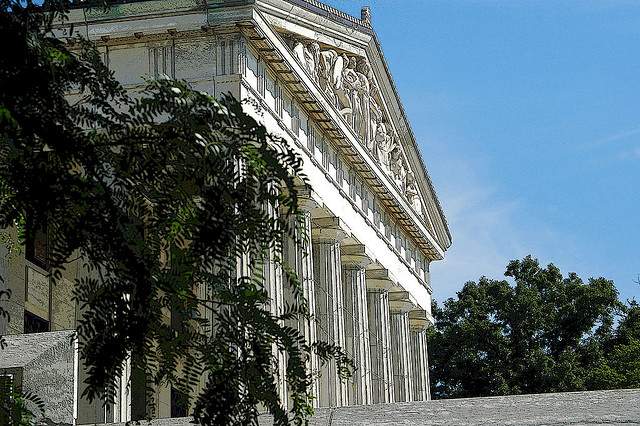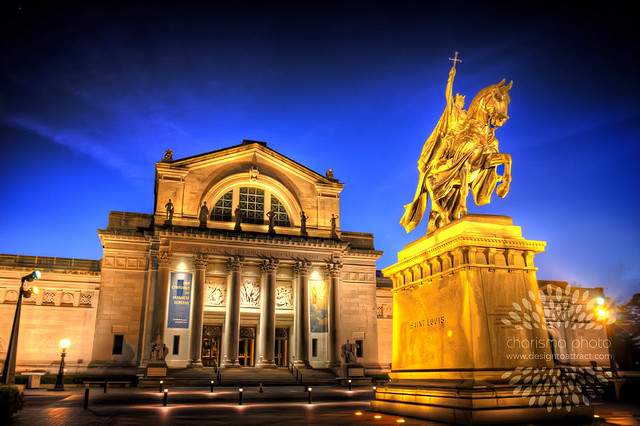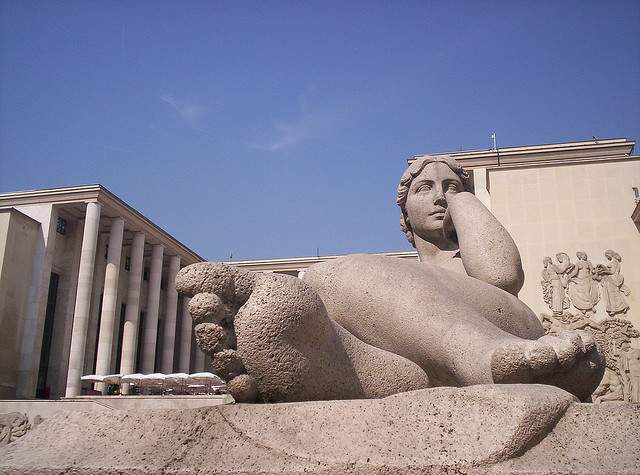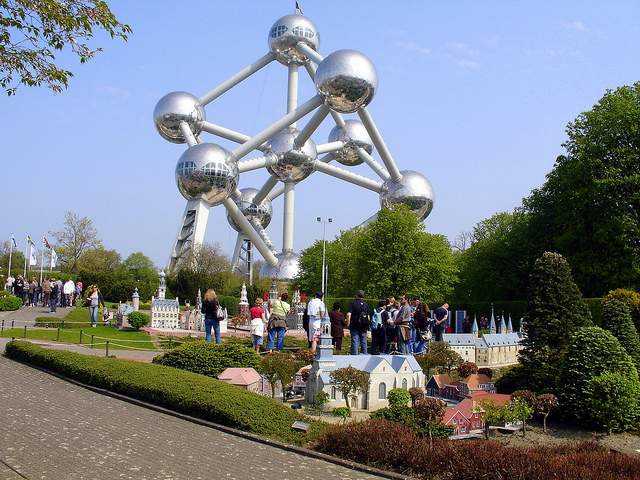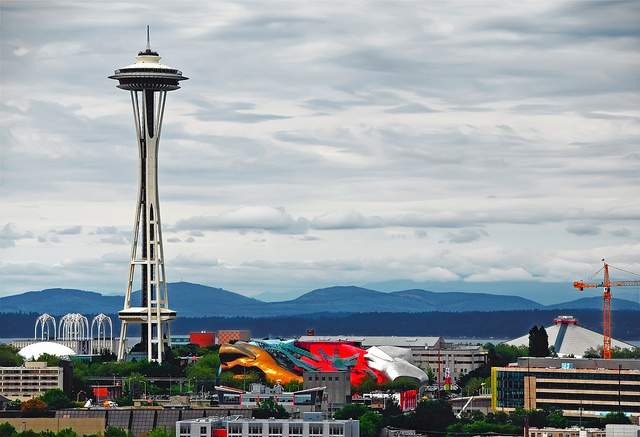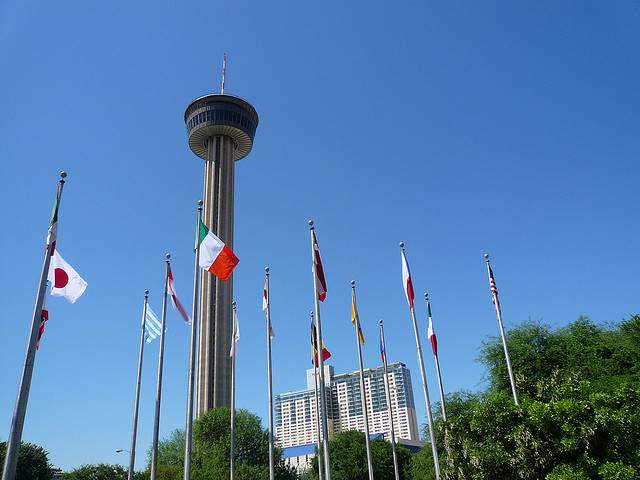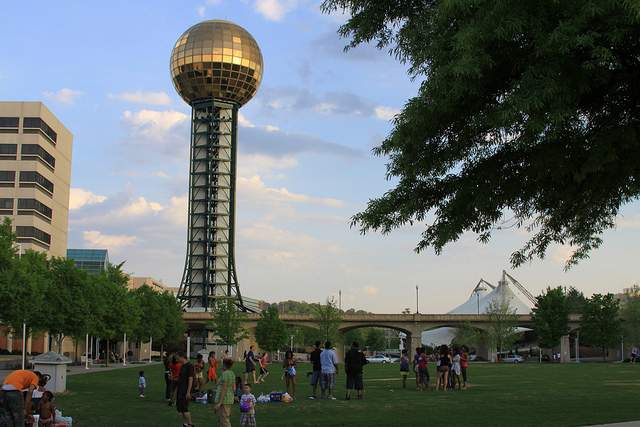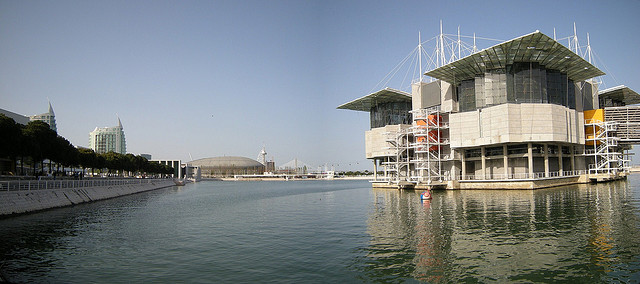World’s Fairs claim many firsts, including the first Ferris wheel, the ice cream cone, the first hot dog, and the first iced tea (what would life be like without that?) but most of the physical buildings are removed once the crowds leave town. Here are some tourist sites that are legacies of World’s Fairs, reminding us of an age when seeing new inventions and foreign culture took more than a trip to the internet.
Eiffel Tower (Paris – 1889)
The Eiffel Tower, built for the 1889 Exposition Universalle in Paris as a temporary structure, is the most famous of the buildings left behind by World’s Fairs. It was built to be dismantled twenty years after the expo, but it turned out to be a pretty swell radio tower. Mocked as an eyesore in its early days, it is now the symbol of the City of Light.
>> Find flights to Paris, get tips for visiting the Eiffel Tower or check out hotels with a view of the Eiffel Tower
Museum of Science and Industry (Chicago, Illinois, USA – 1893)
The Ferris Wheel was built for the 1893 World Columbian Exposition in Chicago, but it’s long gone (the current one at Navy Pier is a replica). However, another great relic survives as the Museum of Science and Industry. When I was a kid, my parents would take us to this museum, where we would eat up a whole day with the highlights: a captured WWII German U-boat, replica coal mine, and shiny Zephyr train. Something about the name Museum of Science and Industry even recalls a world’s fair, even though it originally was built as the Palace of Fine Arts. It became the genesis of Chicago’s fabulous Field Museum before the structure was abandoned and then rescued as the MSI. The seventy-five exhibit halls have been revised throughout the years, and this is still one of the world’s best science museums.
>> Book tickets to Chicago, find a hotel on Michigan Avenue and learn about the best exhibits at the Museum of Science and Industry
Petit Palais & Grand Palais (Paris, France – 1900)
Paris still maintains its 1900-era grandeur, with its white mid-rise buildings spreading like snow across the city, so it is easy to picture a World’s Fair here. Less than a generation after the Eiffel Tower, The Exhibition Universalle opened in 1900 Paris. Remaining in the city are two Art Nouveau masterpieces built for the fair, the Grand Palais and the Petit Palais, across the street from each other in the 8th arrondissement. Tourists rushing from the Louvre to the Musee Orsay miss out on the Petit Palais, with its collection from the Renaissance (think Rubens and Rembrandt) to the 19th century (Poussin, Lorain, and Monet). Enjoy a pleasant snack in the landscaped courtyard, and marvel that there is a crowd-free art museum in Paris with free admission. The obviously larger Grand Palais hosts special events and exhibitions throughout the year.
>> Find cheap hotels in Paris and learn about free things to do in Paris
Buffalo and Erie County Historical Society (Buffalo, New York, USA – 1901)
Today’s Buffalo, New York, is primarily a gateway to Niagara Falls, but in 1900, it was the eighth-biggest city in America and host to the 1901 Pan-American Exposition. Since then, Buffalo has lost nearly 100,000 residents, and until the Bills win a Super Bowl, the World’s Fair will be the most attention the city can get. The Buffalo and Erie Historical Society has maintained one of the Expo’s Greek-revival buildings as their museum, and they house an extensive exhibit on the Expo itself in a nearby building (reservations required) where guests enter through the neck of “Dreamland,” an Art Nouveau head that was once the entrance to the Fair’s midway. Presidential history buffs may have special interest in visiting, as President William McKinley was assassinated while visiting the Fair, and he died in Buffalo shortly afterward.
>> Book a hostel in Buffalo New York
St. Louis Art Museum (St. Louis, Missouri, USA – 1904)
The original Ferris Wheel appeared again at 1904 Louisiana Purchase Exposition in St. Louis, hosted in Forest Park, still the city’s largest green space. The Ferris Wheel is long gone, but the Palace of Fine Arts still stands. Just the name Palace of Fine Arts evokes something grand, and today it houses the St. Louis Art Museum (although “Palace of Fine Arts” sounds more regal). Visitors to this museum discover masterworks, including Hudson River school paintings and the largest public collection of Max Beckmann’s art. Both the St. Louis Art Museum and the nearby St. Louis Zoo are St. Louis’ top free attractions. The zoo can also trace its origins to the fair, and the 1904 Flight Cage from the expo still features our feathered friends.
>> Find flights to St. Louis and learn about things to do in St. Louis
Musée d’Art Moderne de la Ville de Paris (Paris, France -1937)
Do not think that the Pompideu Centre is the only museum of contemporary art in Paris. The Musée d’Art Moderne de la Ville de Paris (Museum of Modern Art of the City of Paris) is housed in the echo-of-deco Palais de Tokyo, constructed for the 1937 Exposition Internationale. Hidden across the Seine from the Eiffel Tower, it is forgotten by most guidebooks and concierges. The museum showcases great works from the twentieth century to the present, but the only time most people have heard of it was when five masterpieces (including a Picasso and a Matisse) were stolen in 2010. Free admission to an art museum in Paris is a treat in a city of expensive attractions, and the collection includes Fauvist Raoul Dufy’s monsterwork “La Fée Électricité.” Dufy, best known for his Crayola Mediterranean seaside paintings, produced this gargantuan 10 meter x 62 meter mural depicting the history of electricity, which was first displayed at the 1937 fair.
The Atomium (Brussels, Belgium – 1958)
If the Atomium was built in historic downtown Brussels, this 335-foot high monument would be among the not-to-be-missed sites of Europe. Since it is located in the suburbs near the last stop on the subway, it escapes the crowds, but skip the chocolate shops and go to the Atomium. Built for Expo ’58, this fantastic overblown atom, shiny like an Airstream, rivals the Space Needle for retro-groovy, and a recent renovation made it sparkle. Just across from the atom’s base is Mini Europe, which displays famous buildings from each EU country at 4% life size, which means you can almost tower over the Leaning Tower.
>> Search airfare to Brussels and book budget accommodation in Brussels
Space Needle (Seattle, Washington, USA – 1962)
The Space Needle is groovy in a Jetsons way. The first time I went to Seattle, I skipped the 650-high Space Needle, envisioning it as overpriced and overhyped. The next time I discovered its retrotastic groove, which highlighted Seattle’s Century 21 Exposition. Seattle is such a picturesque city that the view is always great; even in the rain, the islands of Puget Sound and the ferries in the harbor beckon, although the mountains in the distance may be hidden in the clouds. A meal in the Sky City restaurant includes a trip to the observation deck and in true Austin Powers fashion, the restaurant rotates. Groovy! For the full futuristic experience, ride the monorail into downtown & back.
>> Book a flight to Seattle or find a hotel in Seattle
Tower of the Americas (San Antonio, Texas, USA – 1968)
The 750-foot Tower of the Americas in San Antonio opened for Hemisfair ’68. Still the tallest building in San Antonio, today it is operated by Landry’s Restaurants, which offers an observation deck (branded as “Flags Over Texas”) and a restaurant and bar perfect for tourists and anniversary dinners. The view takes in the Alamodome, the interstate, the roof of the convention center, and miles of Texas landscape, even though the San Antonio skyline is not particularly distinctive. For those seeking some culture with the view, the Institute of Texan Cultures, (part of the University of Texas-San Antonio) is nearly adjacent to the tower.
>> Look for cheap hotels in San Antonio or find a flight to San Antonio
Sunsphere (Knoxville , Tennessee, USA – 1982)
The legacy of the 1982 World’s Fair in Knoxville, Tennessee is the Sunsphere, a gilded disco ball atop an oil derrick,which reached true international acclaim as the Wigsphere on an episode of The Simpsons. Since 2007, the Sunsphere’s observation deck is open to visitors for free by just walking over to the elevator and pushing the button. There is no Bee Gees music playing in the magic 75-foot disco ball, but there is an exhibit telling about the ’82 World’s Fair, where the Chinese hosted the most fascinating pavilion. Today, the view showcases downtown, the Tennessee River, the Knoxville Museum of Art, monstrous Neyland Stadium and the Smoky Mountains just outside of town.
>> Find flights to Tennessee or look for Tennessee hotels
Oceanário de Lisboa (Lisbon, Portugal, USA – 1998)
World’s Fairs haven’t been on the scene as much in the last few decades, as world news travels faster and airplanes can quickly rush us to foreign cultures, but world’s fairs still pop up. One of Europe’s largest aquariums, Lisbon’s Oceanário de Lisboa is just one of the buildings left from Expo ‘98, which pre-planned uses for the fair’s buildings, a change of pace from the disposable fairs a century ago. The Pavilhão Atlântico (Atlantic Pavilion) is still used as an expo center, and the Pavilhão do Futuro (Future Pavilion) was rebuilt as today’s Casino Lisboa.
>> Find flights to Lisbon and read our Lisbon travel guide
Learn more about author Matthew Stone and read his other articles here.
